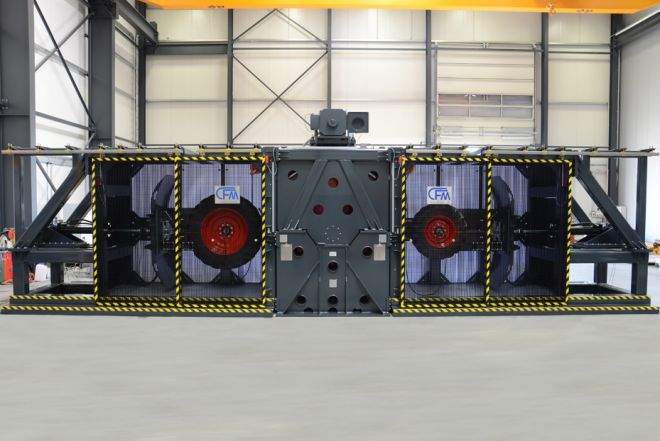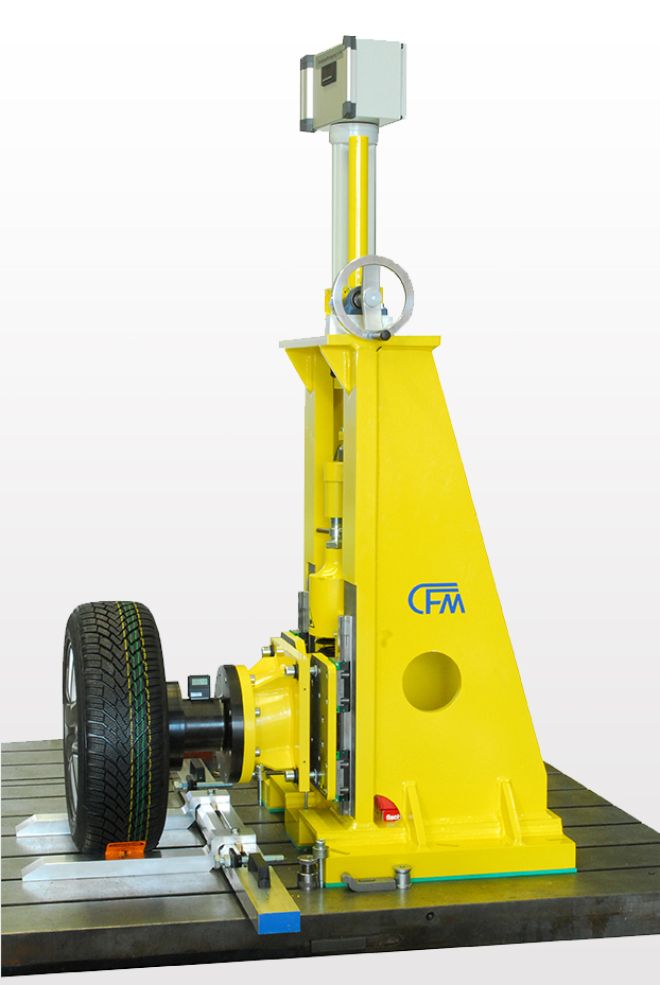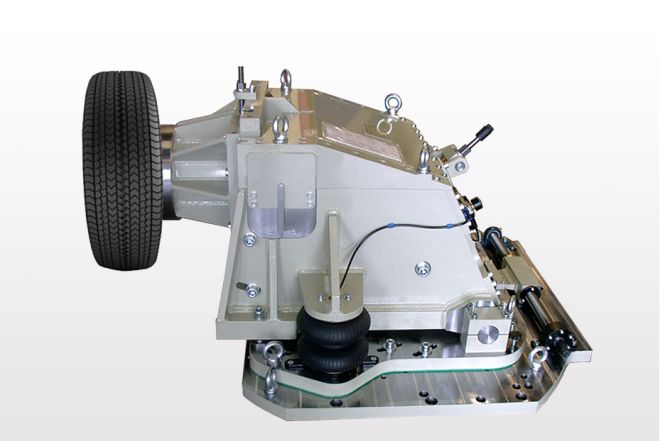TIRE TEST RIGS
CFM Schiller offers extensive experience in design and manufacturing of customized tire test rigs. The following examples show some of our produced test rigs for tire development in the fields of endurance testing, acoustics, and force measurements.
We gladly consult and accompany you during layout, design, and commissioning of your very own tire test rig – feel free to contact us.
Endurance Test Rig
Endurance Test Rig
CFM Schiller has recently developed and delivered a test rig for endurance testing of commercial vehicle tires. In this test rig, a maximum force of 250 kN is applied to tires with a diameter between 1 000 and 2 500 mm (39.4”-98.4”) and a width of up to 1 000 mm. The velocity is continuously adjustable to a maximum value of 160 km/h (100 mph). This test rig allows the simultaneous examination of two tires with different sizes and different applied forces at the same velocity.

ACOUSTIC TEST RIGS
Actively Controlled Tire Test Rig
This CFM tire test bench is used to measure tire characteristics on roller test benches.
The tire is attached to the test bench and can be moved vertically to apply defined wheel contact forces, even during operation.
The tire test bench is designed as a highly rigid and therefore low-vibration steel construction. This allows rigid body natural frequencies greater than 230 Hz to be achieved.
High-performance linear guides and an electric linear drive enable precise vertical adjustment of the tire mount.
The actively driven and controlled drive in the Z direction enables the vertical load of up to 20 kN to be applied continuously and fully automatically between the tire and the drum.
In addition, the tire test bench can be adjusted transversely to the drum in order to pull the tire completely back from the roller and also to apply the load at different points on the roller. This is particularly advantageous for rollers with different coverings.
Hydraulically released spring tension cylinders on the base plate and in the vertical axis of the tire mount enable automatic clamping.
Control is via a hand-held control panel or an external signal. This allows time-efficient and economical testing of tires on roller test benches. The current Z positions are determined by rotary encoders. Force transducers determine the current vertical load during static testing.
The active control moves the test bench in the Z direction until the required load is applied. The measuring system for the tire characteristics is integrated into the test bench and the control system according to customer specifications.
Since these CFM tire test benches are used in sound measurement rooms in most cases, we line the tire test benches with sound-absorbing acoustic panels.
Measurement technology:
The force to be applied is measured directly on the Z linear drive via a force transducer, but can also be equipped with 3-channel or 6-channel measuring wheels.
Tire Test Rig with Application of Preload
This CFM Schiller tire test rig with manual application of preload is intended for testing of tire noises in a laboratory environment. Tire diameters from 13” to 22” can be tested.
The tire test rig can be manually moved with a pallet jack allowing a flexible placement of the test rig. The wheel adapter, which is equipped with preloaded tapered roller bearings, can be manually adjusted in height with a crank handle. The springs are designed in such a way that they are similar to the stiffness of a vehicle suspension. They enable testing with forces between approx. 3 000 N and 7 000 N. The springs can be disabled for testing without spring stiffness. Toe and camber properties are both manually adjustable.

Wheel / Tire Test Rig
For determination of forces to the wheel and examination of tire noise during operation
To determine structure-borne and airborne sounds on wheel and tire systems under different operating conditions, adjustable test rigs are necessary. This test rig offers manual adjustability of toe and slip angle.
The natural frequency of the structure is >300 Hz in order to achieve correct measurement results. Integrated air springs and a pinned support allow elastic support of the wheel adapter. The air springs are furthermore used to continuously adjust the tire loading. For testing under fixed conditions, the test rig components are clamped by means of screws. The load cell, measuring instruments, and the specimen are attached to the test rig with customized adapters.


